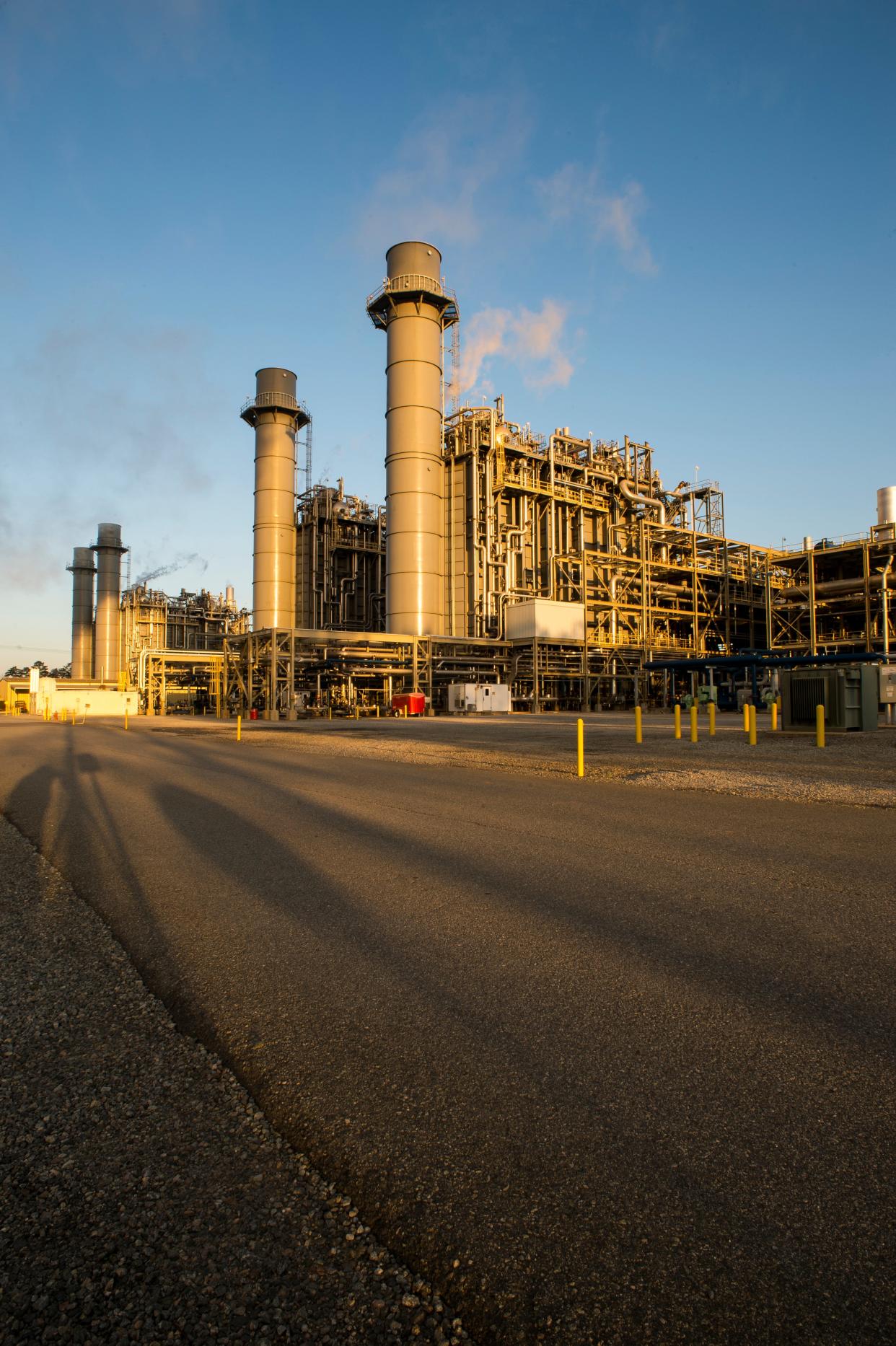New EPA rules subject Georgia Power to severe emissions restrictions at planned plants

New federal rules aimed at slashing heat-trapping pollution from power plants could result in higher bills for ratepayers while potentially driving the decision-making process for Georgia’s largest utility and electric companies nationwide as they weigh their future energy mix, experts say.
The U.S. Environmental Protection Agency on Thursday finalized regulations requiring new gas-fired generating facilities to prevent at least 90% of resulting carbon dioxide emissions from escaping into the atmosphere by 2032.
The standard also applies to existing coal plants expected to continue long-term operations.
The changes could apply directly to Georgia Power, which plans new three gas units at its Plant Yates complex, southwest of Atlanta.
The additions were part of an update to the company’s Integrated Resource Plan approved last week by the Georgia Public Service Commission. That came just eight months after commissioners approved Georgia Power’s scheduled IRP as part of a traditional three-year cycle.
The new GP units, with a combined capacity of up to 1,400 megawatts, are part of the utility’s plan to meet what it says is unexpected demand fueled by a boom in manufacturing and flood of energy-intensive data centers to the state.
Critics blasted Georgia Power’s plan and the commission’s approval of it, arguing that sources such as solar and wind could have filled the void without additional carbon emissions, which are the primary source of climate warming.
In justifying the rule changes, the EPA argued that technology to capture and store carbon is an “available and cost-effective" option for power plants that will allow just 10% of heat-trapping pollution to escape.
Georgia Power did not respond when asked if it concurred with the EPA’s assessment. As approved last week, the IRP does not include carbon capture and storage at the new gas facilities.
More or less: Expansion of Savannah natural gas export facility at crux of nation's climate debate
'Retrofits are more complex'
While Georgia Power’s planned new units would be subject to the revised rules, they would not apply to its existing gas-fired plants because the EPA put off regulatory changes for plants built before May 24, 2023.
That’s a significant distinction, noted Stan Meiburg, a former deputy administrator at the EPA who spent nearly four decades with the agency.

“This reflects that retrofits are more complex in both law and equity,” said Meiburg, now executive director of Wake Forest University’s Sabin Center for Environment and Sustainability.
The scope of the rules also was influenced by the U.S. Supreme Court’s 2022 decision in West Virginia v. EPA, which concluded that the federal government cannot use the U.S. Clean Air Act to dictate how utilities generate energy, but can set technology-based standards to make power plants operate more cleanly.
"EPA’s options for specifying ‘best system of emissions reductions’ are more narrowly constrained and consequently are forced into options that have higher overall system costs,” Meiburg added. “Companies themselves will not be affected, but consumers will if it turns out that these new additional marginal costs render the new gas baseload plants more expensive than renewable energy and storage options, or nuclear small modular reactors.”
Meiburg’s reference to “baseload plants” zeroes in on another distinction within the new regulations.
Utilities, including Georgia Power, argue that because gas-fueled plants continue to run if the sun isn’t shining, they can fill gaps when solar panels and wind turbines aren’t producing, said Chris Carnevale, climate advocacy director at the Southern Alliance for Clean Energy.
Under the new rules, the most-stringent requirements apply to units that run regularly – typically 70-80% of the time – while facilities acting as “backstops” face less restrictive standards because they operate sporadically, Carnevale explained.
“While it might not be immediately obvious, even low-load ‘peaker’ units create significant amounts of carbon pollution due to their inherent inefficiency,” he added.
Hefty penalty: Savannah's Colonial Oil faces $15 million hit for seven years of federal fuel violations
'A lot less is not zero'
Gas-fueled turbines, which generate about half of Georgia’s electricity, release about half the carbon emissions per kilowatt-hour than those powered by coal do. That makes gas a cleaner source, but one that still contributes to climate change.
However, the new rules could shift the energy-production paradigm for some utilities as they contemplate adding gas capacity.
"If you get 90% capture, that’s pretty low carbon,” Meiburg noted. “A lot less is not zero, of course, but the economics may vary considerably from place to place.”
If the rules survive inevitable legal challenges, economics and technological innovation will determine the impact of the new standards, he added.
"There is always going to be a need for baseload power, and combined-cycle gas turbines can do that relatively efficiently and with fewer externalities, certainly as compared with even relatively new coal plants,” Meiburg concluded.
More new regulations
Other federal rule changes announced Thursday will:
Strengthen and update mercury and toxic air standards for coal-fired power plants, tighten the emissions standard for toxic metals by 67%, and reduce emissions of mercury and other contaminants that are important for children and others who regularly consume fish with high levels of pollutants from power plants.
Reduce pollutants discharged through wastewater from coal-fired power plants by more than 660 million pounds a year by setting wastewater discharge standards.
Require the safe management of coal ash placed in areas previously unregulated at the federal level, including at previously used disposal sites.
Together, the rules are expected to provide up to $370 billion in climate and public health net benefits over the next two decades while providing a more predictable regulatory outlook for power companies, the officials said. The EPA said it doesn't expect any erosion of electricity generation or grid reliability.
"Since the start of this administration President Biden has made it clear that we are committed to the integrated priorities of ensuring U.S. energy security, protecting people from pollution and fighting the climate crisis," said EPA Administrator Michael Regan.
John Deem covers climate change and the environment on the Georgia coast. He can be reached at jdeem@gannett.com
This article originally appeared on Savannah Morning News: New EPA emissions rules to impact Georgia Power's planned plants
